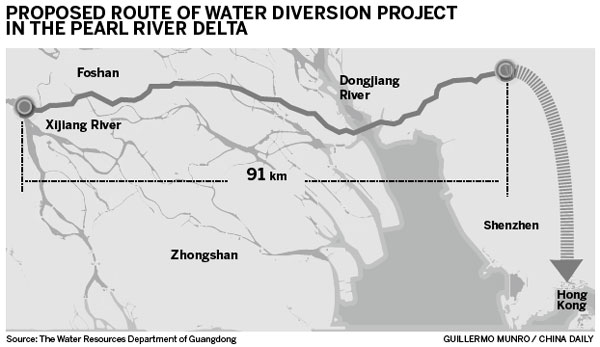
Concerned about Hong Kong's difficulty in acquiring fresh water, the central government undertook the Dong-jiang-Shenzhen Water Supply Project in February 1964. More than 10,000 construction workers spent 11 months on the project, which began operations on March 1, 1965. It has been hailed as the lifeblood of Hong Kong ever since.
With four major alterations over the past 49 years, water supplied to Hong Kong climbed from 22 million cu m to a high of 820 million cubic meters annually, according to Guangdong's water resources department.
The project's annual water supply for Hong Kong in the past decade has been between 617 million and 822 million cu m, accounting for 66 percent to 88 percent of the special administrative region's annual fresh water consumption.
By 2013, the project had supplied Hong Kong with nearly 22.3 billion cu m of water.
"Guangdong's water resources department has been sticking to three principles - guarantee sufficient water, work hard for the best water quality and set a reasonable price - to fully support Hong Kong in developing its economy, improving its people's living and assuring its long-term prosperity and stability," Zhou said.
He said that province faces tough challenges in protecting the water environment, given that the Dongjiang River runs through densely populated eastern Guangdong, where agriculture and industry thrive.
To ensure water quality, Guangdong's provincial environmental protection department has established four automatic supervision stations in the Dongjiang River basin and set up 32 monitoring sections.
"The water has always met the national standard for drinking water sources since the Dongjiang-Shenzhen Water Supply Project began to serve Hong Kong," Zhou said.
